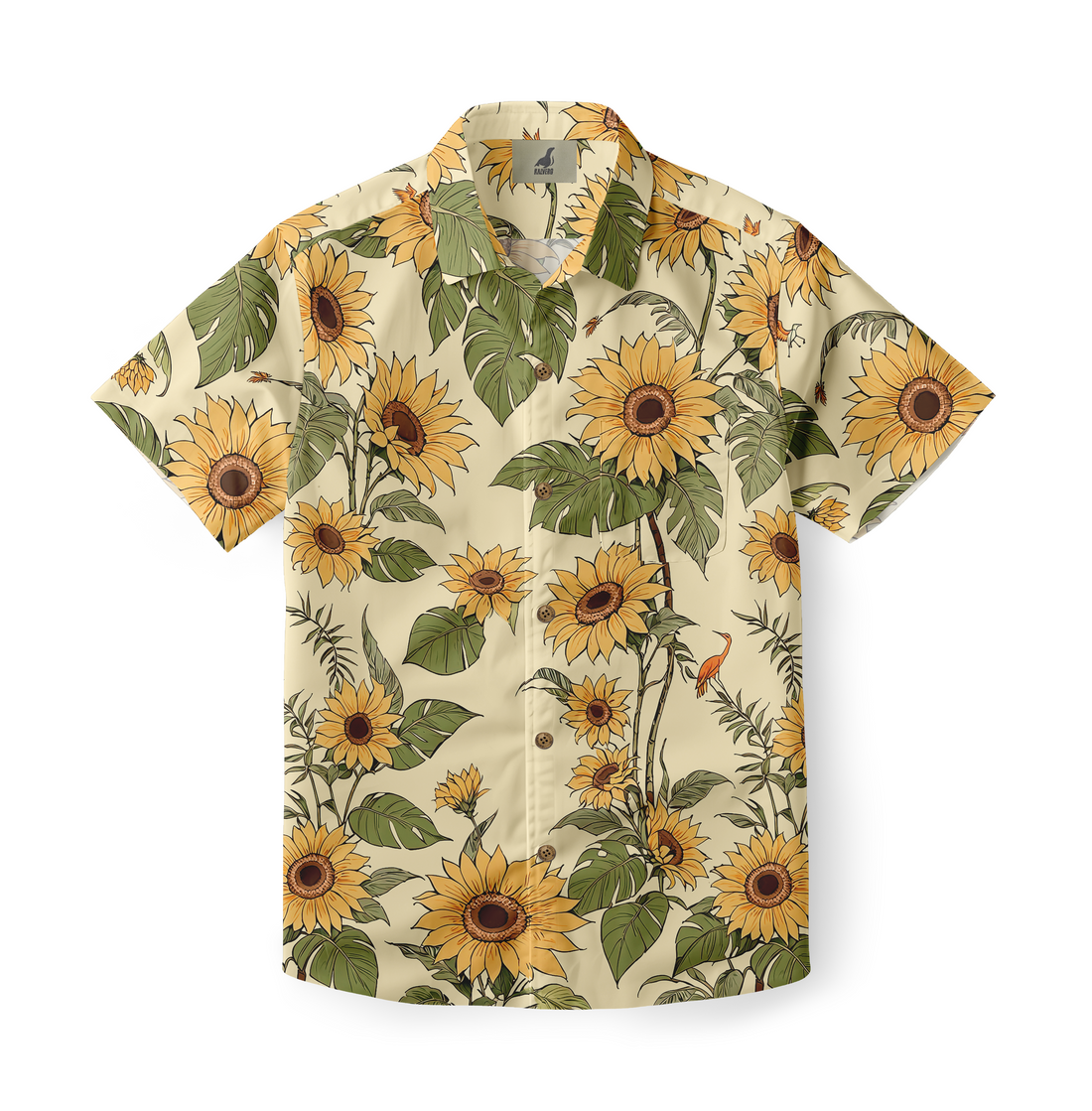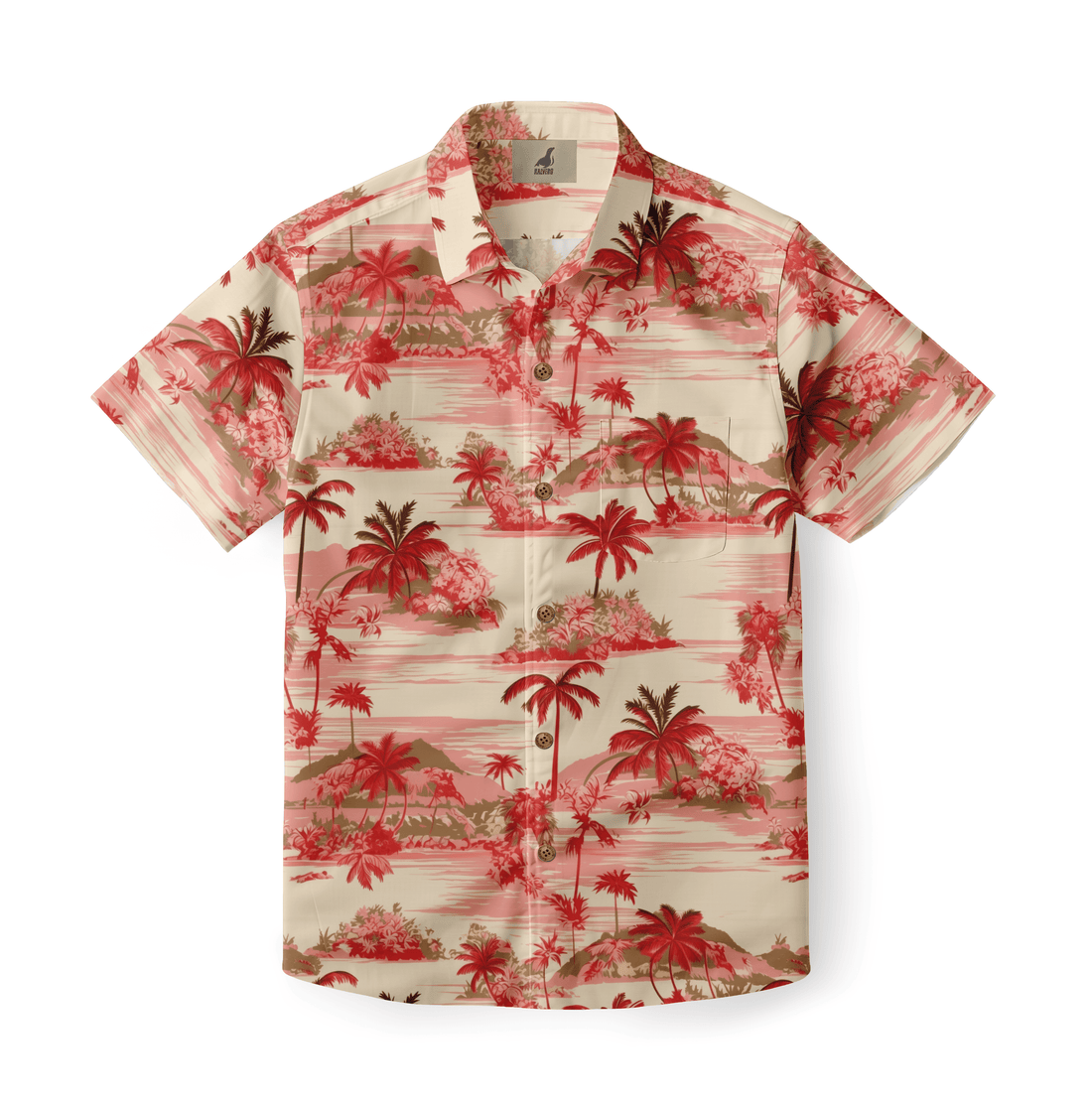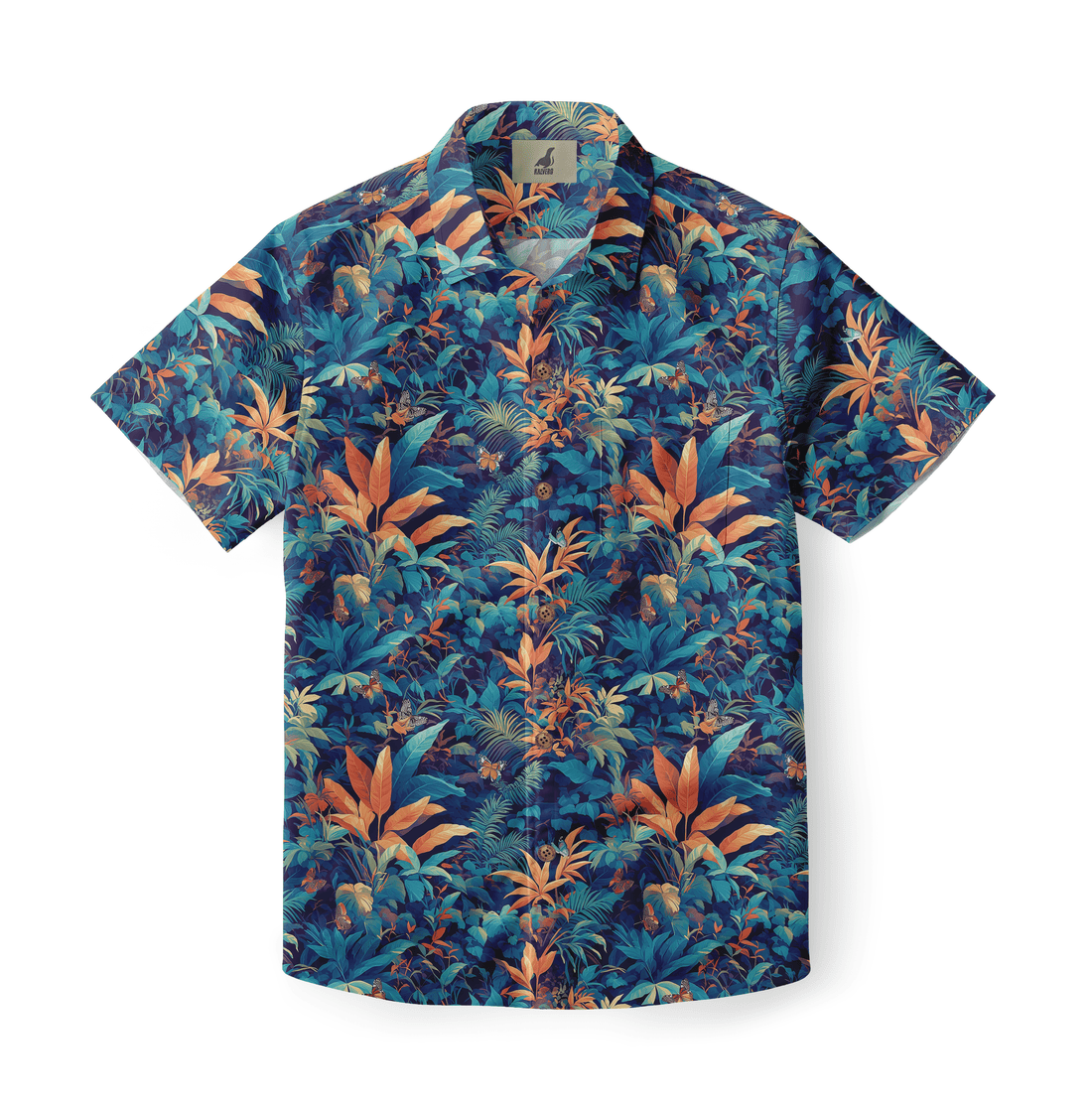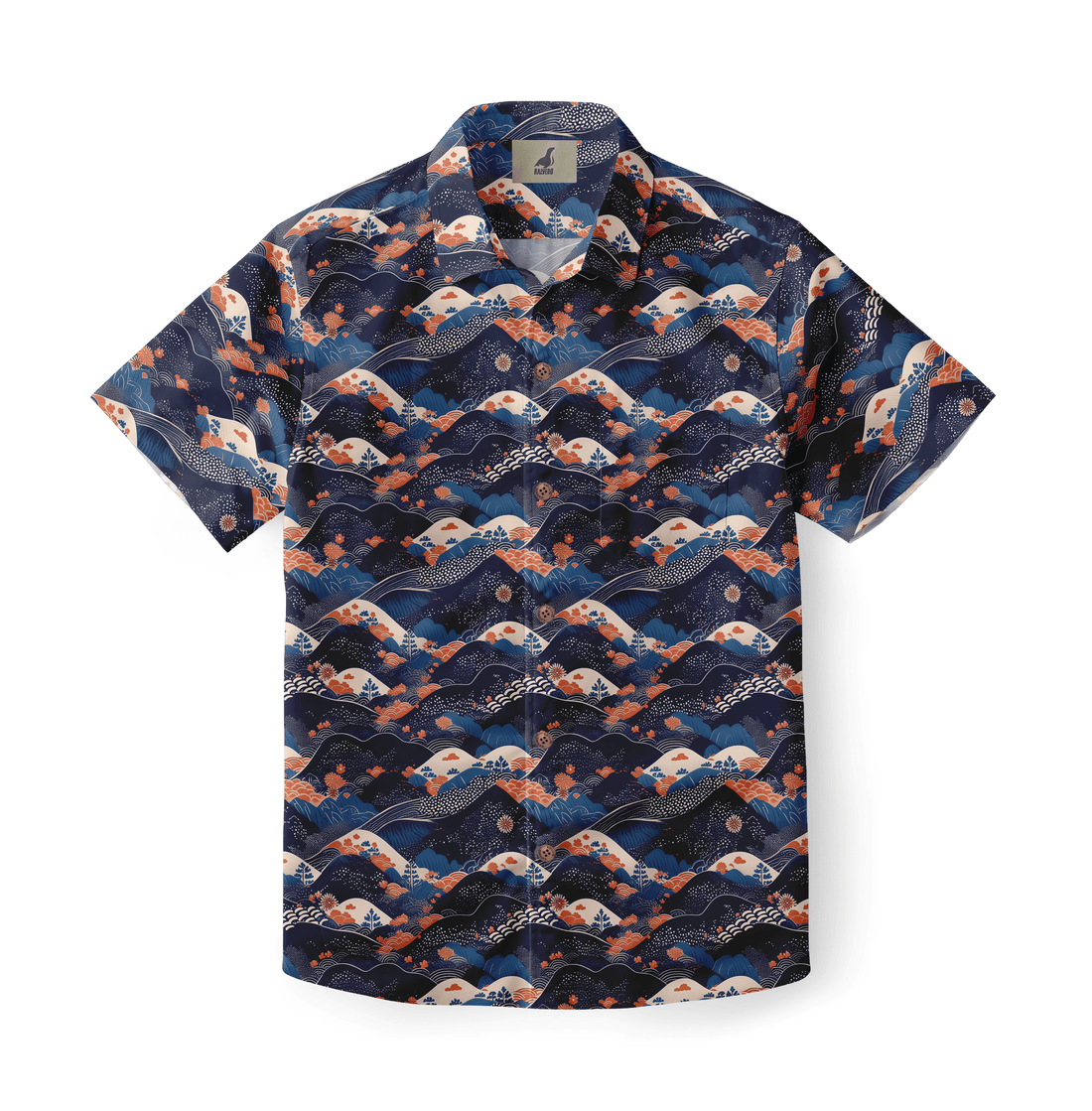There is a common, disappointing experience. You find the perfect Hawaiian shirt with a vibrant print. You wear it once and feel fantastic. Then, after its first trip through the laundry, it emerges a shadow of its former self. The shirt has shrunk to an unwearable size. The brilliant colors have faded into a dull haze. This frustrating outcome leads many to ask, How to Choose a Hawaiian Shirt That Won’t Shrink or Fade? The answer involves a combination of smart shopping and proper care. By understanding fabrics, inspecting garments before you buy, and following specific laundry techniques, you can keep your Aloha shirts looking great for years.
The Fabric Factor: Your First Line of Defense Against Shrinking
The journey to a long-lasting shirt begins with its material. Different fabrics react very differently to washing and drying. Understanding these properties is your best defense against shrinkage. Cotton is a very common choice for its breathability. However, regular cotton is prone to shrinking, especially in warm water and high heat. Look for labels that say "pre-shrunk" cotton. This means the fabric was washed and shrunk at the factory. This makes it much more dimensionally stable for you.
Rayon, also known as viscose, is prized for its silky feel and beautiful drape. It is perhaps the most notorious fabric for shrinking. High heat and excessive agitation in the wash can cause rayon fibers to constrict dramatically. Polyester and polyester blends are synthetic fabrics. They are highly resistant to both shrinking and wrinkling. This makes them a very durable and low-maintenance choice. Silk is a luxurious natural fiber. Like rayon, it is delicate and can be easily damaged or shrunk by improper washing. It often requires dry cleaning.
Understanding Print and Dye Methods to Prevent Fading
The vibrancy of a Hawaiian shirt depends on its dye. How that dye is applied to the fabric determines if it will fade. Not all printing methods are created equal. High-quality manufacturers use techniques that ensure long-lasting color. This is a key way to prevent Aloha shirt shrinking and fading.
-
Pigment Printing: This method applies color to the surface of the fabric like a paint. It is a common and cost-effective technique. However, the color can sometimes feel stiff. It may be more prone to cracking or fading with repeated washing and friction.
-
Reactive Dyeing: This process chemically bonds the dye with the fabric's fibers. The color becomes a part of the material itself. This results in a much softer feel. It also provides superior colorfastness, making the shirt highly resistant to fading.
-
Discharge Printing: This technique uses a color-destroying agent to bleach a pattern onto an already-dyed fabric. It can create very sharp, bright designs and is generally quite colorfast.
The dye and print method is critical for the shirt's longevity. Reactive dyeing is generally considered the superior choice for colorfast tropical shirts. The colors remain brilliant and are much less likely to bleed or fade over time. While the printing method may not always be listed on the label, higher-quality brands tend to invest in better dyeing processes. This is often reflected in the price and the soft feel of the fabric. A shirt with a stiff, plastic-like print is likely pigment-printed and may fade faster.
Key Pre-Purchase Checks for a Hawaiian Shirt That Won’t Shrink or Fade
You can identify a durable shirt before you even buy it. A few simple checks in the store can save you from future laundry-day sorrow. First and foremost, always read the care label. This small tag is your most important source of information. It will tell you the fabric composition and provide the manufacturer's specific washing and drying instructions. If a shirt is labeled "Dry Clean Only," you must be prepared to follow that instruction. Ignoring it will almost certainly lead to damage.
Next, look for specific keywords on the tags. As mentioned, "pre-shrunk" is a great sign for any cotton garment. You can also assess the print quality by hand. Gently scratch a small, inconspicuous area of the print. A low-quality pigment print might feel rough or even flake off. A high-quality reactive dye will feel just as soft as the rest of the fabric. Finally, consider the brand's reputation. Established brands that specialize in Aloha wear typically have higher quality control standards. They are more likely to use stable, colorfast materials.
Fabric Performance Comparison for Shrink and Fade Resistance
| Fabric Type | Shrink Resistance | Fade Resistance | Best For |
|---|---|---|---|
| 100% Cotton (Not Pre-Shrunk) | Low | Moderate | Casual wear, requires careful washing. |
| Pre-Shrunk Cotton | High | Moderate | Reliable choice for easy care and breathability. |
| 100% Rayon / Viscose | Very Low | Good | Luxurious feel, but requires strict cold wash and air dry. |
| Polyester / Polyester Blend | Very High | Very High | Maximum durability and color retention, less breathable. |
This comparison helps clarify your choice based on your priorities. As the table shows, polyester blends offer the best protection against both shrinking and fading. They are the workhorses of durable apparel. However, they may sacrifice some of the breathability found in natural fibers. Pre-shrunk cotton offers a great balance of comfort and stability. Rayon provides the best feel and drape but demands the most careful handling. Understanding this trade-off between feel and durability is key to selecting a shirt that fits your lifestyle and expectations.
How to Choose a Hawaiian Shirt That Won’t Shrink or Fade: Proper Washing Techniques
Once you have brought your shirt home, its longevity is in your hands. Proper washing techniques are essential. The single most important rule is to use cold water. Hot water causes natural fibers like cotton and rayon to constrict and shrink. It also accelerates color bleeding and fading. Always select the cold setting on your washing machine for your Hawaiian shirts. This simple step is your most powerful tool.
Use the gentle or delicate cycle on your machine. The reduced spin speed and agitation are less stressful on the fabric's fibers. This helps prevent stretching, warping, and damage to the print. For very delicate rayon or silk shirts, hand washing is the safest method. Use a mild detergent designed for delicates. Harsh detergents can contain chemicals that strip color from the fabric. To further protect the print, turn the shirt inside out before placing it in the wash. This minimizes friction on the colored surface.
The Critical Step: How to Dry Your Shirt Without Damage
The drying process is just as critical as the washing process. In fact, most shrinkage occurs in the dryer, not the washer. The high heat of a machine dryer is the primary enemy of cotton and rayon shirts. It can cause dramatic and irreversible shrinking. The tumbling action can also damage delicate prints and buttons. You should avoid using a machine dryer for your Hawaiian shirts whenever possible. This is especially true for any shirt made of 100% rayon.
The best method is to air dry your shirts. After washing, gently shake out the garment to remove major wrinkles. Then, hang it on a high-quality, non-metal hanger. Allow it to dry indoors or in a shady spot outdoors. Alternatively, you can lay the shirt flat on a clean, dry towel. This method is excellent for preventing any stretching that might occur from hanging a heavy, wet garment. Always avoid drying your shirt in direct sunlight. The ultraviolet rays can bleach the colors and cause significant fading over time.
How to Choose a Hawaiian Shirt That Won’t Shrink or Fade: A Summary of Best Practices
Preserving the life of your favorite Hawaiian shirt is a three-stage process. It starts with making smart choices before you buy. Then, it continues with careful handling in the laundry. By following a few key principles, you can ensure your shirts remain vibrant and well-fitting. First, prioritize fabric. Choose pre-shrunk cotton for reliability or polyester blends for maximum durability. If you choose rayon for its feel, be prepared for dedicated care. Always inspect the care label before purchasing. It is your guide to the shirt's needs.
After purchase, the care becomes your responsibility. Wash your shirts in cold water on a gentle cycle. Use a mild detergent and turn them inside out to protect the print. The most crucial step is to avoid the high heat of a machine dryer. Hang your shirts to dry or lay them flat. Keep them out of direct sunlight. By integrating these practices, you are not just washing a shirt. You are actively preserving a piece of wearable art. This mindful approach is the ultimate answer to keeping your shirts from shrinking or fading.
Frequently Asked Questions
Why did my 100% cotton shirt shrink even though I washed it in cold water?
Most shrinkage happens during the drying process. Even if you washed it in cold water, placing a 100% cotton shirt in a hot machine dryer will cause the fibers to constrict. Always air dry cotton shirts to prevent shrinking. If the cotton was not pre-shrunk, some minor shrinking can still occur even with perfect care.
Can I use an iron on my Hawaiian shirt?
Yes, but with caution. Always check the care label for the recommended iron temperature. For rayon and polyester, use a low heat setting. For cotton, you can use a slightly higher temperature. It is best to iron the shirt while it is still slightly damp. You can also turn it inside out to protect the print from direct heat.
Is "Dry Clean Only" a strict rule or just a suggestion?
It is a strict rule. If the label says "Dry Clean Only," the manufacturer has determined that water-based washing will likely damage the fabric, dye, or structure of the garment. This is common for silk or some delicate rayon weaves. Ignoring this instruction will almost certainly lead to shrinking, color loss, or other irreversible damage.








